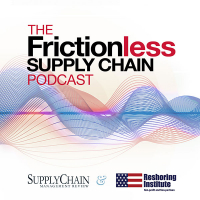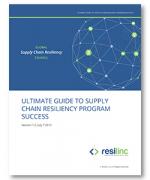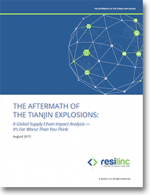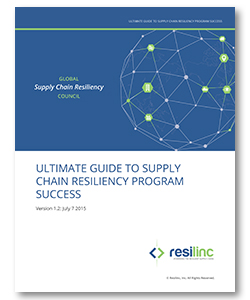Supply Chain Resiliency Program Success
Driven by the growing awareness of the risk that dependence on global supply chain networks represent to market share, revenue, cost targets, brand value, and ultimately shareholder equity, increasingly companies are looking to emerging supply chain risk management and resiliency strategies, practices, and tools for answers.
Supply chain resiliency starts with end-to-end (multi-tier) supply chain visibility and includes comprehensive strategies and analytic technology to sense and manage risks proactively and in a highly responsive manner. These risks range from intrinsic supply chain partner risks as well as embedded network design-related risks.
Goal and Premise
The goal of this white paper is to provide supply chain risk management practitioners with concrete suggestions and guidance on how to create, roll-out, and institutionalize a global supply chain resiliency program (SCRP).
The premise of this guide is that there is an unserved need for information on the topic of building and managing a SCRP that adequately addresses the crucial initial phase of building the business case, identifying the key business drivers in order to establish strategic alignment, and securing executive sponsorship. While best practices in this area have perhaps been documented and shared, they are not integrated into a broader program deployment and operational plan.
This guide also attempts to untangle the confusing array of processes and labels for those processes, put forward (e.g. risk assessment, risk analysis, risk evaluation), as well as the loosely associated best practices. It aims to refresh and organize program implementation and maturation best practices into a single comprehensive and easier to navigate reference and starting point for building a world-class supply chain resiliency program.
What’s Related



Favorites





